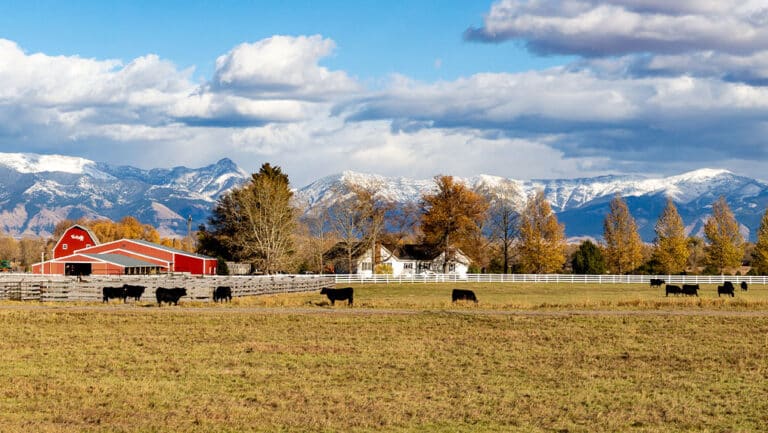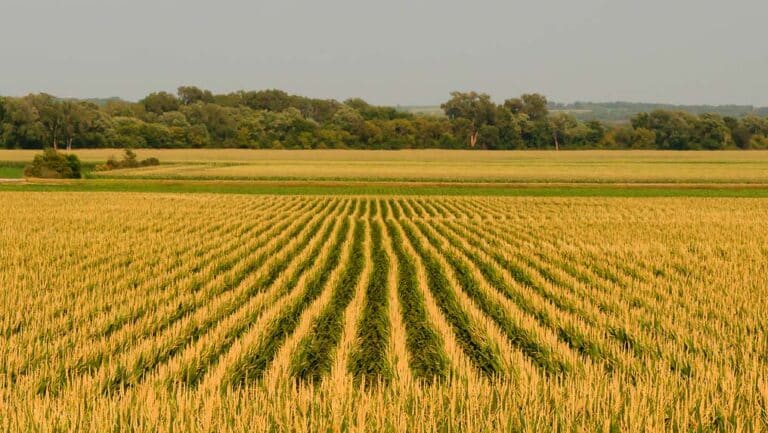Five Ways To Increase Farm Profitability
Input costs are up, commodity prices are down, and now is the time to assess your bottom line.
The USDA expects a decrease in farm sector profits this year. Net farm income is forecast at $136.9 billion—a decrease of nearly 16 percent compared to last year. As cash receipts for commodities tick down and direct government payments fall, many operators are looking for ways to reduce costs and increase farm profitability.
As a lender that works exclusively in the agriculture space, AgAmerica has helped hundreds of farmers strengthen their finances. While every operation is unique, here are five essential steps every farmer can take to improve their financial position.
1. Lower Overhead Costs
There are several strategies farmers can use to lower overhead costs. Overhead costs can include:
- Rent or mortgage payments
- Utilities
- Property taxes,
- Insurance
- Administrative salaries
- Accounting fees,
- Equipment maintenance
- Marketing expenses
- And more
One way to lower overhead costs is by refinancing or consolidating your debt in order to lower monthly payments. Some operators find that consolidating debt from several different loans under one monthly payment nets them a lower interest rate and a more manageable payment schedule.
If you find yourself needing an upgrade or battling equipment maintenance fees, farm equipment leasing is another way to save you money. Leasing equipment or infrastructure instead of buying can lower your payments on essential tools to enhance overall farm profitability.
2. Lower Input Costs
Input costs differ from overhead costs as they are expenses directly associated with the production of commodities. In farming, input costs typically include items like seeds, fertilizer, feed, and more.
Monitoring key performance indicators (KPIs) helps to reduce farm input costs and identify ways to improve your operation’s financial health. The top five KPIs to track include:
- Commodity pricing
- Working capital
- Debt-to-asset ratio
- Asset turnover ratio
- Regional price of goods
Monitoring these KPIs can help you make strategic investment decisions for your operation in things like precision agriculture technology and efficient farm equipment to decrease costs and increase yields. Every operation is unique, but some of the most common cost-saving farm investments include drip irrigation systems, integrated pest management, smart cloud databases, and AI technology.
Pro tip: Some farmers find that implementing vertical integration allows more control over production factors, reduced expenses, and additional revenue streams.
For example, an AgAmerica client from New Mexico was able to create a more resilient vertically integrated operation with a customized $8MM loan package that consolidated existing debt. The funds allowed them to invest in crop diversification, drip irrigation systems, and precision ag technology during a drought.
3. Update Your Farm Balance Sheet
If you plan on applying for a farm loan, having an updated balance sheet is essential. Lenders typically require an updated agricultural balance sheet within the past three months. If you’re accustomed to updating it annually, you can use the previous version as a template and adjust the numbers to reflect the most recent quarter. Updating will be much faster than starting from scratch.
Pro tip: The ideal timing for updating your balance sheet depends on the type of operation you have. For example, grain operators may find post-harvest as the most accurate time, while cow-calf operations may choose when calves are born.
4. Create A Farm Succession Plan
Creating a farm succession plan is essential for farm continuity. A comprehensive succession plan serves as a form of insurance for unexpected situations. The plan should include important contacts, farm data, and timelines to provide family members and employees with the necessary information to run the farm and transition smoothly when the time is right.
Categories to cover in the plan include general information (bank accounts, advisors), land information (leases, easements), crop and livestock information (vendors, storage capacity), and equipment information (inventory, payment dates).
Pro tip: Make regular updates to ensure your succession plan remains relevant and useful. Read more tips on how to put the ‘success’ in succession by downloading AgAmerica’s free whitepaper below.

5. Be Transparent With Your Lender
Developing and maintaining a positive relationship with your lender is vital to operational success. A strong borrower-lender partnership is built on shared goals and values, trust, flexibility, and industry expertise. Effective communication, transparency, and a commitment to long-term relationships are key to fostering a successful borrower-lender relationship.
Asking questions, keeping up on communication, and ensuring accessibility of relevant financial information are also important factors in cultivating a positive relationship with the lender.
Pro tip: It is important to find a lender who understands the unique needs of farmers and offers customized and adaptable loan solutions. Transparency needs to go both ways—seek a lender who has your best interests in mind.
Find Out If Your Farm’s Finances Are In The Green
Looking to enhance your operational finances but unsure where you stand? Our free health check calculator is designed to provide you with guidance and steer you in the right direction. Get your complimentary financial health check today.






